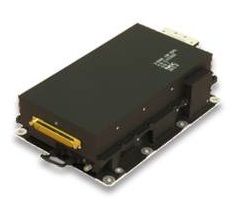
The amplifier should be able to deliver low distortion of the components of the music that are important to transmit the emotion. As you can tell from the previous paragraph I am not particularly worried about harmonic distortion at high levels. This is, of course, a gross simplification of what is going on-just blame any problems on the speaker designer.ĭistortion is another concern of amplifier design. When you release the current, the cone will move out on its own. The assumption that a loudspeaker requires symmetric current sources is a “plurality” that “should not be assumed without necessity.” When you apply a positive current to a loudspeaker, its cone should move inward, increasing the pressure in the box. It is not what many would consider a good design, unless, of course, they actually listen to it. It can push several amps into the loudspeaker, but can pull back only a fraction of that. However, the current output is not symmetric. The smallest version of this amplifier can produce about 15V RMS and can safely drive very low impedances. One of the other fun tidbits to be considered is that amplifiers put out voltage, but most loudspeakers use current. Unfortunately, there does not seem to be a loudspeaker that would use this to produce a practical listening level. The best-sounding amplifier I ever built had an output of only one-fourth of a watt. This particular amplifier design is built to be scaled. Some are very inefficient, others can do quite a bit with 1W.

Some amplifiers are very fussy and others are not. I have a wide assortment of loudspeakers. I have observed from previous designs that each amplifier has a sweet spot for the level at which it works best and the loads that it likes to see. The power for an amplifier is a bit trickier. I have not determined a rule of thumb about the exact low-end design values, and my current rules are subject to modification as better speakers appear. Even though very few rooms can allow a good loudspeaker to fully express itself, it is simple and inexpensive to make sure that the amplifier is not limiting the rest of the system. In the past, using a digitally synthesized signal to produce waveforms with equal peak amplitude but different time delays between tones, I established a design goal for my listening threshold as less than 5° of phase shift at 20kHz. The engineering interpretation of this goal in building an amplifier involves, first, the easy stuff that is, the bandwidth, starting with high frequency response. I therefore do not feel guilty about dramatizing what I have to work with, to increase the emotional content in keeping with my interpretation of the original performance. I wish to return this to an emotional expression, but I do not have all of the original information by the very nature of the recording process, information is lost. It comes to me encoded as a time-varying voltage of one or more channels. I then consider music as an emotional expression transmitted in three dimensions through a pressure modulation in the air. My simplest goal would be to reproduce music.

When I design using this philosophy, I must first decide what the goal is and then use the simplest possible method to obtain it.


 0 kommentar(er)
0 kommentar(er)
